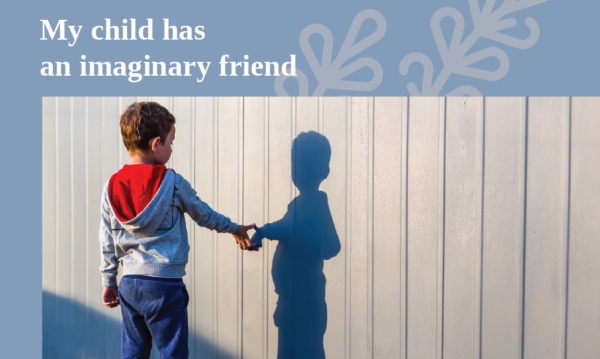Your kid has a new friend, John. John is always available to play, shares the same interests as your child, never asks for different food or toys, and never has to take him home. John is a creation of your child’s imagination.
Many young children (about 65%) create imaginary friends between the ages of 3 and 5 when they begin to form their own identity and test the boundaries between fantasy and reality. Although it was thought that children exceed the existence of imaginary friends from the moment they start school, research shows that almost a third of children continue to play with imaginary escorts until the age of 7. A three-year survey found some differences over the past few years. At a younger age, invisible friends were more likely to rely on physical objects (such as a stuffed animal), more girls than boys to have imaginary friends, and parents to know the imaginary friend’s existence. However, few differences were found in the social or emotional understanding and personality of children who had imaginary escorts and children who did not. According to the research, however, children with invisible friends could better understand other people’s perspectives.
There’s nothing to worry about if you find that your child has a fantastic friend. This invisible friend is usually nothing more than the product of a strange and creative mind trying to perceive the expanding world. Children who have such an active imagination tend to develop into well-tended and creative adults.
Imaginary friends serve a variety of useful purposes. They enable children to experience different relationships at a critical time of their social development. They allow children to explore control, discipline, and power without the stress associated with real authority interactions. For example, if you hear your daughter scold her invisible boyfriend, don’t automatically assume you were too strict with her. This scenario can be an imaginative way for your child to understand the concepts of power, right and wrong, and punishment. Also, the invisible escort sometimes has powers, which are missing from the child. And he’s enjoying a few perks that the kid doesn’t have. An invisible friend can even help the child cope with complicated feelings. For example, a child who threw down the glass with milk can blame the imaginary friend to deal with the guilt he feels – a perfectly normal strategy.
Concerns about significant changes in a child’s life, such as a new baby or a divorce, may be reflected in the child’s relationship with a fictional friend. Parents can monitor any changes in the relationship with the invisible attendant to obtain valuable information about how to deal with the child and then take action if necessary. For example, you may notice that your four-year-old boy is suddenly very close to his imaginary friend some weeks before your removal to a new home. Although he has not directly expressed any fear of moving, strengthening relations with his imaginary friend could sign that the child needs the assurance that his house can change, but the people who are the most important for it will continue to be part of his life.
When should you be worried?
Learn from the intensity and duration of the child’s engagement with his imaginary friend. A child who avoids significant interaction with other children, preferring to play solely with the invented friend, may experience psychological distress. Invisible friends may eventually disappear, but if the child continues to focus on an invented companionship, you could consult a specialist to clarify whether the child is experiencing some underlying problems or concerns.
In general, however, having an imaginary friend is a sign that the child faces complex issues that concern all young children who interact with the world around them. Do not discourage or shorten the value of this relationship, but do not over-engage with it. Follow the child’s script but within certain limits.
Mostly try to enjoy this very natural and often charming aspect of your child’s development. This child can face the most critical challenges of development in an inventive and imaginative way.
Bibliography:
I. Taylor, M. (2004). Developmental Psychology (Vol. 40, No 6)


